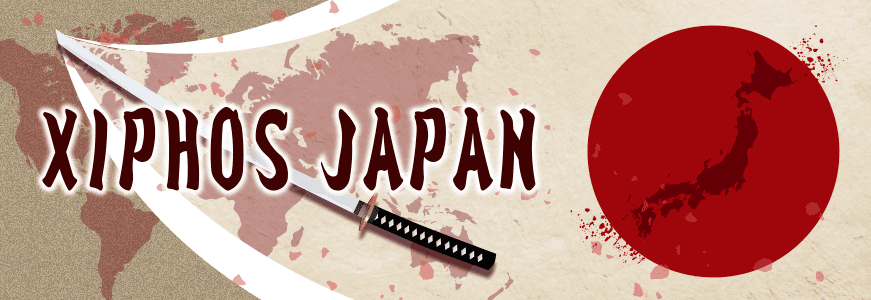
The year 2024 is shaping up to be a rather bleak year in international affairs, with the conflict between Russia and Ukraine still showing no sign of being settled, and the Israeli-Palestinian issue is also likely to remain a persistent problem, with semi-permanent conflict likely to continue. In addition, China and Russia are also looking vigilantly for opportunities to expand their territory around Japan, and we can only hope that this year will be a little warmer and safer.
Australia’s defence concept has evolved against a background of changes in the security environment in the Indo-Pacific region. In particular, the rise of China and the strengthening of defence cooperation with the United States have been key factors in recent years.
・Basic defence strategy
Australia’s defence strategy is systematically presented through documents such as the Defence White Paper and the Defence Strategy. These documents set the direction of Australia’s defence policy and reflect the country’s defence policy in the context of regional and international affairs.
Basic concept.
Homeland Defence: the protection of Australia’s mainland and its territories is a top priority. A robust defence posture at sea, on land and in the air is required to protect Australia’s vast territory and waters.
Maintaining stability in the Indo-Pacific: Australia plays a strategic role in maintaining stability and peace in the Indo-Pacific region, in cooperation with neighbouring countries.
International responsibilities: Australia is also actively involved in international peacekeeping and humanitarian aid operations, contributing to the security of the international community.
Strong defence alliance with the United States (ANZUS).
Australia’s defence policy is based on its defence alliance with the United States, the **ANZUS Treaty (signed in 1951)**. This alliance is an important strategic element for Australia and cooperation with the US is enhanced by
Joint military training and exercises: Australia and the US regularly conduct joint exercises to enhance interoperability (the ability of different military forces to conduct operations together).
US military technology and equipment: Australia has introduced state-of-the-art US equipment (e.g. F-35 fighter jets and P-8A Poseidon patrol aircraft), which maintains a high level of combat capability.
AUKUS Agreement: the AUKUS Agreement (Australia-US-UK defence cooperation), signed with the US and UK in 2021, provides Australia with nuclear submarine technology to strengthen its influence in the Indo-Pacific region. As a result, Australia is modernising its submarine force.
・
Security in the Indo-Pacific region
The security of the Indo-Pacific region is the most important theme of Australia’s Defence Initiative. In particular, the focus is on responses to the following regions
South China Sea and East China Sea.
China’s expansion of its maritime interests and military presence is a major concern for Australia. Australia supports freedom of navigation under international law and actively participates in efforts to protect freedom of navigation in the South and East China Seas.
Freedom of Navigation Operations (FONOPs): together with the United States, Australia participates in maritime operations to protect freedom of navigation in the South China Sea, emphasising navigation in accordance with international law.
China’s rise and regional balance
The economic and military rise of China has led Australia to build on its Indo-Pacific strategy to counter China’s growing influence. Australia attaches great importance to maintaining a free and open Indo-Pacific, and has also strengthened defence cooperation with India and Japan.
Relations with the Pacific Islands
Australia is also committed to strengthening its relationship with the Pacific Islands, and works to promote regional stability through defence assistance and disaster relief for these countries. In particular, strengthening ties with Pacific Island countries is an important strategic element for Australia.
・
Defence equipment modernisation and new technologies
Australia has focused on modernising its defence capabilities in recent years. New military technology and equipment is being introduced and enhancements are underway in the following areas
Air power
F-35 fighter aircraft: Australia has maintained air superiority with the introduction of the F-35 Lightning II, a state-of-the-art stealth fighter aircraft. This has enabled the Royal Australian Air Force to strengthen its military presence in the region.
Maritime forces.
Submarines (nuclear submarines under AUKUS): Australia is in the process of introducing nuclear submarines under the AUKUS agreement. This enhances maritime capabilities and deterrence in the region.
Maritime security capability: the introduction of the P-8A Poseidon and new frigates has improved maritime surveillance and defence capabilities.
Cyber Defence.
Strengthening cyber security is another key challenge. Australia is expanding its Cyber Defence Force to deal with cyber warfare and prepare for cyber attacks on national and civilian infrastructure.
Future defence initiatives.
Australia’s future defence concept focuses on the following elements
Multilateral cooperation: Australia is strengthening defence cooperation with countries such as Japan, India, New Zealand and South East Asian countries to maintain stability in the Indo-Pacific region.
AI and robotics: we are developing next-generation defence capabilities that utilise new technologies such as **artificial intelligence (AI) and unmanned aerial vehicles (drones)**.
Increased defence budget: to strengthen our defence capability, we will increase our defence budget and modernise our equipment over the next few years.
Australia’s defence initiatives revolve around maintaining peace and stability in the Indo-Pacific region. A strong alliance with the US, defence cooperation within the region and the introduction of state-of-the-art technology form its elements, maintaining a flexible and strategic defence capability that is responsive to regional conditions.







